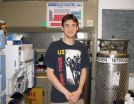(Press-News.org) Production of crop milk, a secretion from the crops of parent birds, is rare among birds and, apart from pigeons, is only found in flamingos and male emperor penguins. Essential for the growth and development of the young pigeon squab, pigeon 'milk' is produced by both parents from fluid-filled cells lining the crop that are rich in fat and protein. Research published in BioMed Central's open access journal BMC Genomics uses new technology to study the genes and proteins involved in pigeon 'milk' production and shows that pigeon 'milk' contains antioxidants and immune-enhancing proteins.
Researchers from CSIRO Livestock Industries and Deakin University, Australia, compared the global gene expression profiles of the crops of four 'lactating' and four 'non-lactating' female pigeons. As the pigeon genome has not yet been sequenced, they used a chicken microarray to find the genes involved. Genes predominantly over-expressed in 'lactating' birds were those involved in stimulating cell growth, producing antioxidants and in immune response. They also found genes associated with triglyceride fat production, suggesting the fat in the 'milk' is derived from the pigeon's liver.
Lead author, Meagan Gillespie, says, "It is possible that if antioxidant and immune proteins are present in pigeon 'milk', they are directly enhancing the immune system of the developing squab as well as protecting the parental crop tissue". She continues, "This study has provided a snap-shot view of some of the processes occurring when 'lactation' in the pigeon crop is well established. Due to the unusual nature of 'lactation' in the pigeon it would be interesting to investigate the early stages of the differentiation and development of the crop in preparation for 'milk' production to further ascertain gene expression patterns that characterize crop development and 'lactation' in the pigeon." She concludes, "This mechanism is an interesting example of the evolution of a system with analogies to mammalian lactation, as pigeon 'milk' fulfills a similar function to mammalian milk".
INFORMATION:
Notes to Editors
1. Histological and global gene expression analysis of the 'lactating' pigeon crop
Meagan J Gillespie, Volker R Haring, Kenneth A McColl, Paul Monaghan, John A Donald, Kevin R Nicholas, Robert J Moore and Tamsyn M Crowley
BMC Genomics (in press)
Please name the journal in any story you write. If you are writing for the web, please link to the article. All articles are available free of charge, according to BioMed Central's open access policy.
Article citation and URL available on request at press@biomedcentral.com on the day of publication.
2. BMC Genomics is an Open Access, peer-reviewed journal that considers articles on all aspects of genome-scale analysis, functional genomics, and proteomics.
3. BioMed Central (http://www.biomedcentral.com/) is an STM (Science, Technology and Medicine) publisher which has pioneered the open access publishing model. All peer-reviewed research articles published by BioMed Central are made immediately and freely accessible online, and are licensed to allow redistribution and reuse. BioMed Central is part of Springer Science+Business Media, a leading global publisher in the STM sector.
Milking the pigeon: extracting the mechanisms involved
2011-09-19
ELSE PRESS RELEASES FROM THIS DATE:
Reassurance for dementia sufferers on impact of common drugs
2011-09-19
Researchers whose findings on the detrimental impact of some common medicines on elderly people were widely reported earlier in the summer have found that taking a few of these medicines does not appear to cause further cognitive impairment in those already suffering from dementia.
In a paper published today by the journal Age and Ageing, Dr Chris Fox of the University of East Anglia (UEA) and colleagues from a number of other universities and the NHS describe how they studied a clinically representative sample of 224 people with established Alzheimer's dementia who ...
For unzipping DNA mysteries -- literally -- Cornell physicists discover how a vital enzyme works
2011-09-19
ITHACA, N.Y. – With an eye toward understanding DNA replication, Cornell researchers have learned how a helicase enzyme works to actually unzip the two strands of DNA. (Nature, online Sept. 18, 2011.)
At the heart of many metabolic processes, including DNA replication, are enzymes called helicases. Acting like motors, these proteins travel along one side of double-stranded DNA, prompting the strands to "zip" apart.
What had been a mystery was the exact mechanics of this vital biological process – how individual helicase subunits coordinate and physically cause the unzipping ...
Gamers succeed where scientists fail
2011-09-19
Gamers have solved the structure of a retrovirus enzyme whose configuration had stumped scientists for more than a decade. The gamers achieved their discovery by playing Foldit, an online game that allows players to collaborate and compete in predicting the structure of protein molecules.
After scientists repeatedly failed to piece together the structure of a protein-cutting enzyme from an AIDS-like virus, they called in the Foldit players. The scientists challenged the gamers to produce an accurate model of the enzyme. They did it in only three weeks.
This class ...
U of T-led research improves performance of next-generation solar cell technology
2011-09-19
TORONTO, ON – Researchers from the University of Toronto (U of T), the King Abdullah University of Science & Technology (KAUST) and Pennsylvania State University (Penn State) have created the most efficient solar cell ever made based on collodial-quatum-dots (CQD).
The discovery is reported in the latest issue of Nature Materials.
Quantum dots are nanoscale semiconductors that capture light and convert it into an energy source. Because of their small scale, the dots can be sprayed on to flexible surfaces, including plastics. This enables the production of solar cells ...
Catching a breath -- wirelessly
2011-09-19
SALT LAKE CITY, Sept. 19, 2011 – University of Utah engineers who built wireless networks that see through walls now are aiming the technology at a new goal: noninvasively measuring the breathing of surgery patients, adults with sleep apnea and babies at risk of sudden infant death syndrome (SIDS).
Because the technique uses off-the-shelf wireless transceivers similar to those used in home computer networks, "the cost of this system will be cheaper than existing methods of monitoring breathing," says Neal Patwari, senior author of a study of the new method and an assistant ...
ADHD symptoms worsen quality of life for individuals with autism
2011-09-19
NEW YORK, N.Y. (September 18, 2011) – Research supported by the Autism Speaks Autism Treatment Network (ATN), demonstrating that symptoms of attention deficit and hyperactivity worsen quality of life for individuals with autism spectrum disorders (ASD), was presented today at the Society for Developmental & Behavioral Pediatrics Annual Meeting in San Antonio, Texas. Researchers Parul Vora, M.D., developmental-behavioral pediatric fellow at Nationwide Children's and Darryn Sikora, Ph.D., Director of the Autism Program at Oregon Health Sciences University, used data exclusively ...
Minimizing extinctions in a changing climate: New study
2011-09-19
More species could be saved from extinction under climate change thanks to a new model scientists have developed to guide allocation of conservation funding.
The international team, led by Dr Brendan Wintle of the University of Melbourne and the ARC Centre of Excellence for Environmental Decisions, is the first to develop a pioneering decision-support model that incorporates both ecological and economic information to guide conservation investment in the face of climate change. The work is published today [Monday 19 September] in the journal Nature Climate Change.
"The ...
We are not only eating 'materials', we are also eating 'information'
2011-09-19
In a new study, Chen-Yu Zhang's group at Nanjing university present a rather striking finding that plant miRNAs could make into the host blood and tissues via the route of food-intake. Moreover, once inside the host, they can elicit functions by regulating host "target" genes and thus regulate host physiology.
MicroRNAs are a class of 19-24 nucleotide non-coding RNAs that do not code for proteins. MicroRNAs bind to target messenger RNAs to inhibit protein translation. In previous studies, the same group has demonstrated that stable microRNAs (miRNAs) in mammalian serum ...
Study finds bidirectional relationship between schizophrenia and epilepsy
2011-09-19
Researchers from Taiwan have confirmed a bidirectional relation between schizophrenia and epilepsy. The study published today in Epilepsia, a journal of the International League Against Epilepsy (ILAE), reports that patients with epilepsy were nearly 8 times more likely to develop schizophrenia and those with schizophrenia were close to 6 times more likely to develop epilepsy.
Prior clinical studies have shown a prevalence of psychosis among epilepsy patients and studies of psychiatric illness have found a strong relationship between schizophrenia and epilepsy, suggesting ...
Causes of Gulf War Illness are complex and vary by deployment area -- Baylor University study
2011-09-19
Gulf War Illness (GWI)—the chronic health condition that affects about one in four military veterans of the 1991 Gulf War—appears to be the result of several factors, which differed in importance depending upon the locations where veterans served during the war, according to a Baylor University study.
Published online today in the journal Environmental Health Perspectives, the study investigated links between GWI and veterans' locations during the war. GWI was most prevalent in veterans who served in forward areas of Iraq and Kuwait, where it was most strongly associated ...


